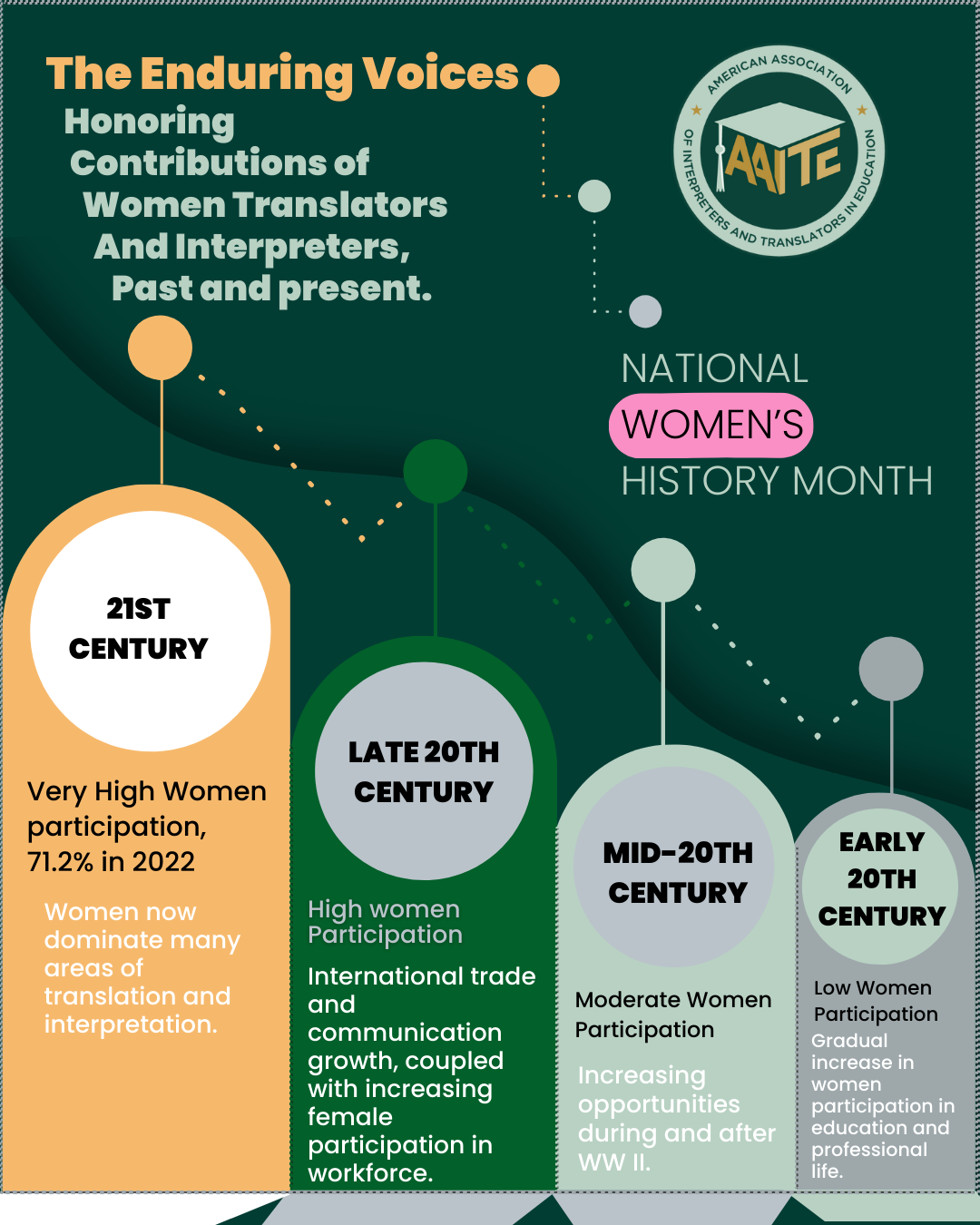Her Words, Our World: Honoring Women Translators & Interpreters for Women's History Month

Forget Google Translate (okay, maybe just for five minutes). This Women’s History Month, let's ditch the instant gratification of AI and raise a glass—or a meticulously annotated thesaurus—to the original linguistic superheroes: the women interpreters and translators who've been quietly (and often brilliantly) building bridges between worlds for centuries.
These aren't just ladies who knew a few extra languages. These are the codebreakers, the diplomats, the cultural whisperers who navigated treacherous political landscapes and helped shape history, one perfectly nuanced phrase at a time. Forget damsels in distress—these women were damsels fluent in distress signals in several languages!
From Pocahontas to Proust: A Whirlwind Word Tour
Think back to your history classes, the good parts, anyway. Remember Pocahontas? While often romanticized and, let's be honest, inaccurately portrayed, she was a vital interpreter between the Powhatan people and the Jamestown settlers. Then there was Madame de Staël, the 18th-century literary lioness who introduced German Romanticism to France. She didn't just translate words; she translated ideas, shaping entire intellectual movements. Talk about influence!
And let's not forget the unsung heroines of wartime. During World War II, countless women worked as codebreakers and translators, playing a crucial role in Allied victories. These were jobs that demanded not only linguistic skills but also unwavering discretion and courage. Many remained anonymous for decades, their contributions only recently seeing the light of day. Speaking of crucial: The women interpreters working the Nuremberg Trials were vital in ensuring fairness and accuracy in the proceedings, bringing justice to the victims of Nazi atrocities.
Fast forward to today, and we have literary giants like Edith Grossman, whose translations of Gabriel García Márquez and Miguel de Cervantes have introduced these masterpieces to a whole new generation of readers. And Lydia Davis, celebrated American writer, translator, and academic, renowned for her minimalist and precise translations of French literature. These women aren't just swapping words; they're crafting art.
Women's Quiet Domination of Interpretation and Translation
Why were women secretly rockstars at interpretation and translation, and how did we almost miss the memo?
Think of it this way: for ages, society was basically telling women, "You can't do this important thing, but you can totally be super good at talking to people!" So, they honed those communication skills like nobody's business. It's like a superpower unlocked by limitations.
Plus, for a long time, translation and interpretation weren't exactly seen as glamorous, "boys' club" jobs. So women, who often faced closed doors in other areas, could sneak in and dominate.
Take La Malinche, for example. This woman basically had the ear of Cortés during the conquest of Mexico. She wasn't just spitting out words; she understood the nuances of entire cultures. She wasn't just an interpreter; she was a power broker. You could argue she shaped the whole darn country!

Of course, the fact that many women's contributions have been overlooked speaks to a broader historical trend. Fortunately, times are changing! While pinning down exact historical figures is like trying to nail Jell-O to a wall (seriously, the record-keeping is spotty!), available data shows a clear trend: women are taking over the translation and interpretation world! Here's a snapshot:
-
Pre-20th Century: Let's be honest, the numbers were low. Women's contributions were often informal and unrecorded.
-
Mid-20th Century: Wartime opportunities and shifting societal roles led to a gradual increase.
-
Late 20th Century: A significant surge in participation was seen.
-
21st Century: Boom! Women now make up the majority of interpreters and translators, estimated at 71.2% over 28.8% men, according to USA Data!
Women Translators and Interpreters in a Globalized World
The world needs translators and interpreters now more than ever. As globalization continues and societies become increasingly interconnected, the ability to bridge linguistic and cultural divides is crucial. And with so many talented women leading the charge, the future of translation and interpretation is looking bright, diverse, and, let's face it, downright fabulous.
So, next time you're captivated by a beautifully translated book, engrossed in a foreign film, or witnessing a seamless international negotiation, remember the women who helped build those bridges, one word at a time. They are the true heroes of cross-cultural connection!
